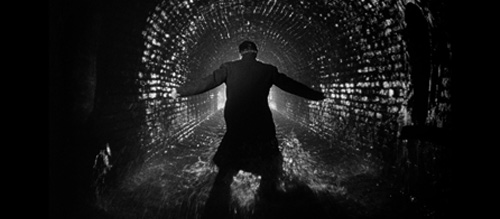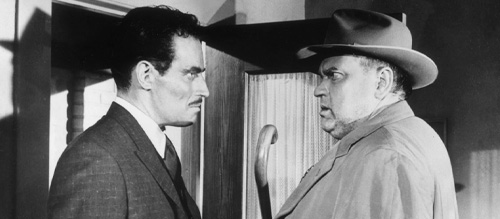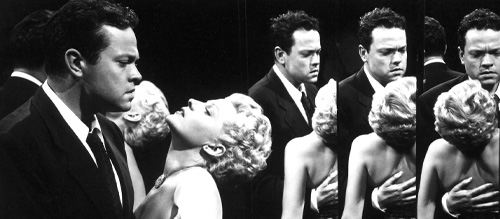Where to Start with Orson Welles
Orson Welles has one of the most interesting careers in the history of cinema. Despite being hailed as a genius from the offset, he rarely got final cut on his films, resulting in many critical and commercial failures that were completely out of his control. His poor box office results led to him being exiled from Hollywood. Dissatisfied with constant battles with studio executives, Welles found solace in Europe where he was able to operate with greater creative control. It was here that he made some of his finest films and was able to experiment in a way that Hollywood never allowed. In order to fund his films, Welles often appeared in commercials and surprising projects such as The Muppets Movie, and the voice of Unicron in The Transformers: The Movie. Outside of filmmaking, Welles was an avid magician, and a lifelong member of the International Brotherhood of Magicians – which only makes him more fascinating.
A maverick of cinema, Welles was known for his innovative and distinctive style. His reputation for pushing the boundaries of conventional storytelling and experimenting with different techniques to create a unique visual and narrative experience made him stand out. His camerawork used deep focus photography, which allowed for everything in the frame to be in focus, giving Welles a larger canvas to tell his story. His editing choices, such as cross-cutting and overlapping dialogue, were highly influential to many filmmakers.
Perhaps controversially, Welles’ most celebrated film, Citizen Kane, will not be featured in this list. Citizen Kane is better appreciated after becoming familiar with Welles’ style, once the pressures of such an iconic status as Best Film of All Time has slipped away. Likewise, the brilliant F for Fake has been omitted. Welles’ late career documentary on forgery has a lot of call-backs to his earlier work, therefore is much more rewarding to those more knowledgeable of his career. Both films should be sought out eventually, as they are equally fantastic and some of the many highpoints in Welles’ unmissable oeuvre.
It’s difficult not to recommend so many films, such as Chimes at Midnight with its breathtaking battle sequence that inspired the likes of Braveheart and the Battle of The Bastards from ‘Game of Thrones’. His version of Othello is worthy of mention too, being one of the most masterfully shot black and white films in history. But everyone must start somewhere, and these three films are the perfect entry points into one of cinema’s greatest tycoons. This is Where To Start with Orson Welles.
1. The Third Man (1949)

The Third Man is a film noir set in post-World War II Vienna, Austria. The story follows a writer named Holly Martins, who arrives in the city to take a job offered by his old friend Harry Lime. However, when Martins arrives, he discovers that Lime has died under mysterious circumstances. As Martins begins to investigate his friend’s death, he finds himself drawn into a web of intrigue and danger, and discovers that Lime may not have been the man he thought he was.
Welles didn’t direct The Third Man, instead only playing the supporting role of Lime. But Welles has as much a presence on screen as he does behind the camera, and no film better encapsulates this than The Third Man. From the moment he first appears on screen, Welles commands attention with his natural charisma. It’s a scene which Roger Ebert described as “the most famous entrance in the history of the movies.” He imbues Lime with a devil-may-care attitude that is both charming and menacing, and his interactions with Joseph Cotten’s Martins are some of the film’s most memorable moments. One of the most famous scenes in the film, in which Lime delivers a monologue about the futility of justice whilst on a ferris wheel, has become a classic moment thanks in large part to Welles’ delivery and the fact he wrote it.
Director Carol Reed and cinematographer Robert Krasker create a visual style that uses unusual camera angles, shadows, and light to create a sense of tension that matches the film’s noir narrative. The interplay between light and dark during the sewer scene creates a sense of claustrophobia and dread that make for an effective climax. Krasker was awarded the Best Cinematography – Black and White at the 1950 Academy Awards. Additionally, the bizarre score, performed on a zither by Anton Karas, makes the film unique against similar films.
The Third Man isn’t just successful because of Orson Welles. Joseph Cotten is equally as impressive as Martins and Reed directs masterfully, culminating in a near perfect classic. But, as an introduction to the enigmatic man, it is perfect at showcasing his charm that has endeared audiences for decades.
2. Touch of Evil (1958)

Directed by Orson Welles, Touch of Evil involves a corrupt police captain named Hank Quinlan, who is investigating a bombing on the US-Mexico border. When evidence points to a Mexican national named Sanchez, Quinlan uses his power to frame Sanchez for the crime. Meanwhile, Mexican drug enforcement agent Miguel Vargas, becomes involved in the investigation and grows frustrated at the corruption and prejudice at the heart of the case. As tensions rise, Quinlan and Vargas become locked in a dangerous battle of wit and power.
Touch of Evil slaps you in the face with its opening shot – a three-minute long take that follows a bomb placed in the trunk of a car as it travels across the US-Mexico border. It’s difficult not to fall in love with Welles after witnessing this. It’s a technical achievement and such a brilliant showcase of skill that can reignite passion in even the most unfazed of film fans. Much like Alfred Hitchock’s approach to tension, the audience’s knowledge of the bomb makes those three minutes gripping. The remainder of the film is equally captivating, as the story builds towards an electrifying conclusion that matches the intensity and excitement of the opening scene.
As with most of his films, Welles also acts in Touch of Evil. He plays the corrupt and menacing police captain Hank Quinlan. Welles’ performance is larger than life, and is cleverly shot to ensure he always fill the frame. He is rarely seen in full. Instead, we are only shown his hulking body one bit at a time. This framing suggests his corruption has spread and his influence looms large over the town. It’s a level of filmmaking that prioritises character above all else. Through Quinlan, Welles explores themes of racism and abuse of power which are shockingly still relevant today, affording Touch of Evil a timeless quality that can make it easier for first-time viewers to connect to the story.
Touch of Evil is a must-see film for fans of the noir genre and anyone who appreciates masterful filmmaking. Orson Welles’ vision and talent shine through in every frame, making it a worthwhile watch and a perfect entry point into his career.
3. The Lady from Shanghai (1947)

The final film on this list follows Michael O’Hara, a sailor who becomes entangled in a complex web of deceit and betrayal when he meets Elsa Bannister, the beautiful and mysterious wife of a wealthy lawyer. When Michael agrees to work on the Bannisters’ yacht, he becomes embroiled in a plot to murder Elsa’s husband and finds himself framed for the crime. Through various twists and turns, Michael must navigate a dangerous and seductive world in order to clear his name and uncover the truth about Elsa’s intentions.
The Lady from Shanghai is a great starting point because it showcases Welles’ playfulness. The wobbly Irish accent he uses for Michael adds a lot of fun. This imperfection is a reaffirmation that the proclaimed boy genius was flawed. And yet, he is having so much fun in every single frame that it becomes endearing. Unlike other auteurs, Welles is warm and non-threatening – and whatever role he takes he is always a joy to watch. Acting opposite Welles is his ex-wife, the incomparable Rita Hayworth. She plays Elsa as cunningly dangerous, the perfect foil for the in-over-his-head Michael. Their chemistry is one of the film’s strongpoints and any fan of golden age Hollywood should leap at the chance to see these two icons sharing the screen together.
Once again, Welles is able to simultaneously balance his skills in front of and behind the camera. One of the film’s most memorable scenes is the climactic hall of mirrors showdown that creates a dizzying and disorienting experience. It has been parodied so many times that it feels like a trope at this point, but in true trailblazing fashion Welles did it first. While the intricate plot can occasionally veer on the messy side, Welles keeps the film engaging with stunning camera work.
With fun performances and iconic scenes, The Lady from Shanghai is a perfect place to ease into Orson Welles. It explores themes that occur often in his work, such as betrayal, portraying a world of deceit and corruption where people are willing to go to any length to fulfil their desires.
Recommended for you: Where to Start with Powell & Pressburger
As is the case with big name directors, getting into Orson Welles can be daunting. As a man whose debut is hailed as the greatest film of all time, people might initially be put off by such high acclaim. But Welles is actually one of the most rewarding filmmakers to get into. With only 13 films to his name (and a whole slew of unfinished projects), his filmography is relatively brief when compared to other well-known directors. His varied career, from Hollywood to Europe, is densely packed with great performances, stellar visuals, and rich themes, that make his films very rewatchable. Hopefully this guide has made that first step easier. Be sure to check out the rest of his work, especially Citizen Kane, F for Fake and The Trial, and enjoy one of the true geniuses of cinema.

